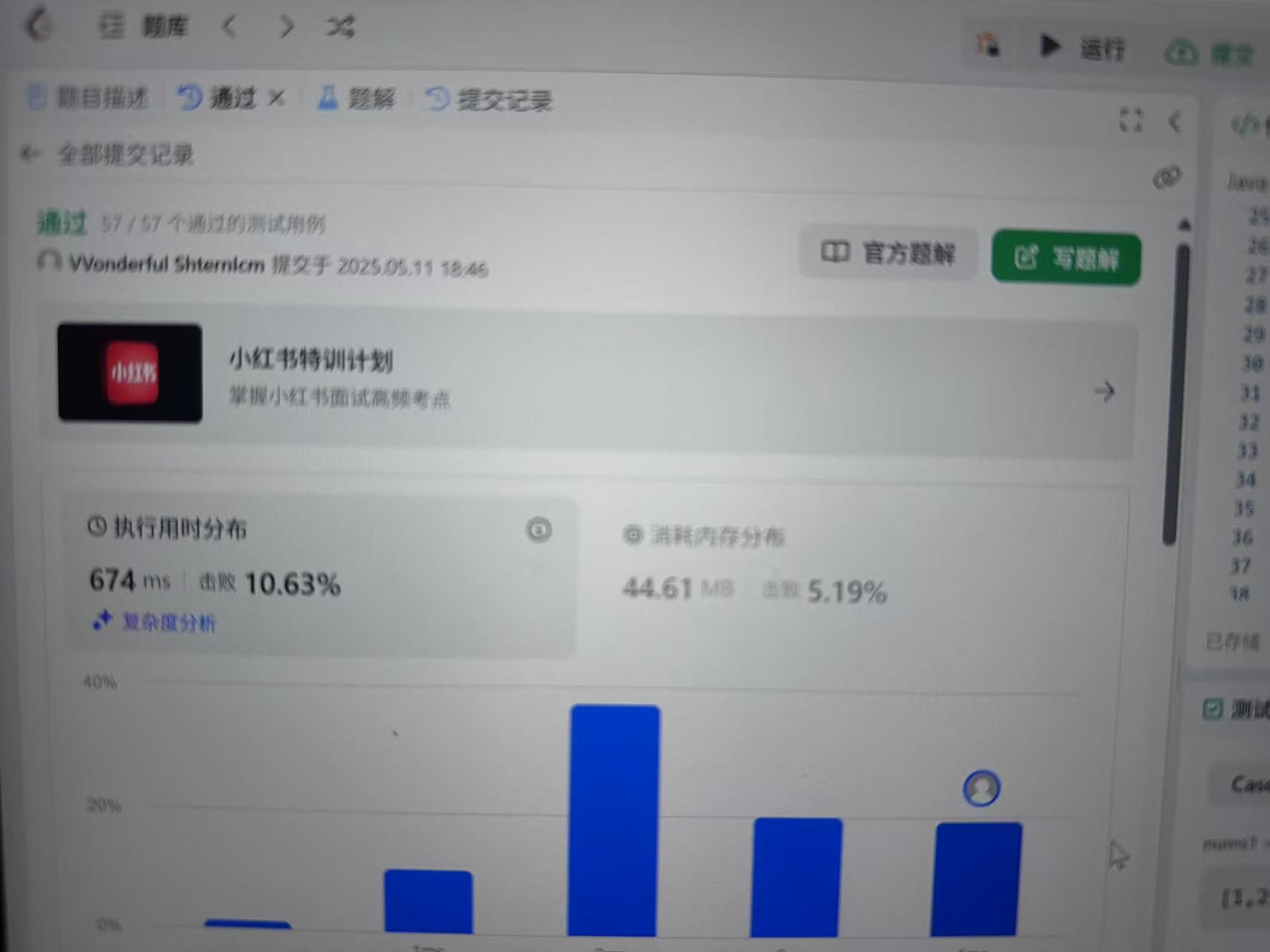118
社区成员
 发帖
发帖 与我相关
与我相关 我的任务
我的任务 分享
分享豆包AI支持
import java.util.*;
public int[] intersection(int[] nums1, int[] nums2) {
// 1. 将数组转换为栈(栈顶为数组最后一个元素)
Stack<Integer> stack1 = arrayToStack(nums1);
Stack<Integer> stack2 = arrayToStack(nums2);
// 2. 创建临时栈用于存储共同元素
Stack<Integer> commonStack = new Stack<>();
// 3. 复制stack1到temp1(避免修改原栈)
Stack<Integer> temp1 = new Stack<>();
temp1.addAll(stack1);
// 4. 遍历stack2(元素顺序与原数组相反)
Stack<Integer> temp2 = new Stack<>();
while (!stack2.isEmpty()) {
int num = stack2.pop(); // 弹出stack2的栈顶元素
// 5. 检查temp1中是否存在该元素(时间复杂度O(n))
if (contains(temp1, num)) {
commonStack.push(num); // 存在则加入共同元素栈
}
// 6. 使用temp2保存stack2的弹出元素,以便后续恢复
temp2.push(num);
}
// 7. 恢复stack2的原始顺序(元素顺序与原数组相反)
while (!temp2.isEmpty()) {
stack2.push(temp2.pop());
}
// 8. 将共同元素栈转换为Set去重,并转为数组返回
Set<Integer> uniqueCommon = new HashSet<>(commonStack);
int[] result = new int[uniqueCommon.size()];
int index = 0;
for (int num : uniqueCommon) {
result[index++] = num;
}
return result;
}
private Stack<Integer> arrayToStack(int[] arr) {
Stack<Integer> stack = new Stack<>();
for (int num : arr) {
stack.push(num); // 按数组顺序压栈,栈顶为数组最后一个元素
}
return stack;
}
private boolean contains(Stack<Integer> stack, int target) {
Stack<Integer> temp = new Stack<>();
boolean found = false;
// 1. 遍历栈查找元素(时间复杂度O(n))
while (!stack.isEmpty()) {
int num = stack.pop();
if (num == target) {
found = true;
}
temp.push(num); // 保存元素到临时栈
}
// 2. 恢复原栈的顺序(元素顺序不变)
while (!temp.isEmpty()) {
stack.push(temp.pop());
}
return found;
}

举个例子(豆包举例
数组转换为栈:
对于 nums1,调用 arrayToStack(nums1) 后,stack1 为 [1, 2, 3](栈顶为 3)。
对于 nums2,调用 arrayToStack(nums2) 后,stack2 为 [2, 3, 4](栈顶为 4)。
创建临时栈和复制操作:
创建 commonStack 用于存储共同元素,初始为空栈。
复制 stack1 到 temp1,temp1 为 [1, 2, 3](栈顶为 3)。
遍历 stack2 并检查元素:
开始遍历 stack2,stack2 栈顶元素 num = 4,调用 contains(temp1, 4):
contains 方法中,temp 初始为空栈,found 为 false。
遍历 temp1,temp1 栈顶元素为 3,不等于 4,将 3 压入 temp,继续遍历。
temp1 栈顶元素为 2,不等于 4,将 2 压入 temp,继续遍历。
temp1 栈顶元素为 1,不等于 4,将 1 压入 temp,遍历结束,found 仍为 false,contains 方法返回 false,commonStack 不变。
将 4 压入 temp2。
stack2 栈顶元素 num = 3,调用 contains(temp1, 3):
contains 方法中,temp 初始为 [1, 2, 3](temp1 恢复后的状态),found 为 false。
遍历 temp1,temp1 栈顶元素为 3,等于 3,found 变为 true,将 3 压入 commonStack,contains 方法返回 true。
将 3 压入 temp2。
stack2 栈顶元素 num = 2,调用 contains(temp1, 2):
contains 方法中,temp 初始为 [1, 2](temp1 恢复后的状态),found 为 false。
遍历 temp1,temp1 栈顶元素为 2,等于 2,found 变为 true,将 2 压入 commonStack,contains 方法返回 true。
将 2 压入 temp2。
stack2 为空,遍历结束。
恢复 stack2 的原始顺序:
从 temp2 中依次弹出元素并压入 stack2,stack2 恢复为 [2, 3, 4]。
转换结果:
将 commonStack 转换为 HashSet 去重,uniqueCommon 为 [2, 3]。
创建 result 数组,将 uniqueCommon 中的元素放入 result 数组,result 为 [2, 3]。